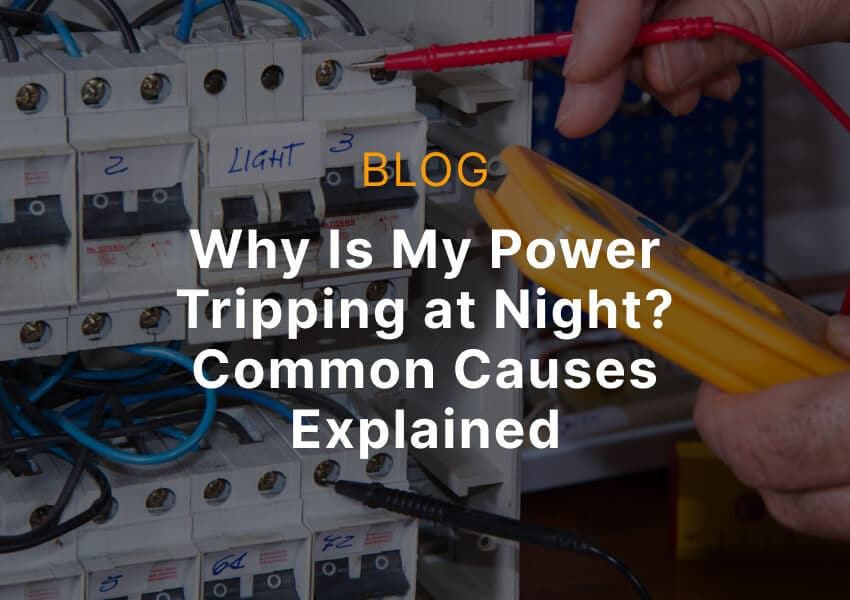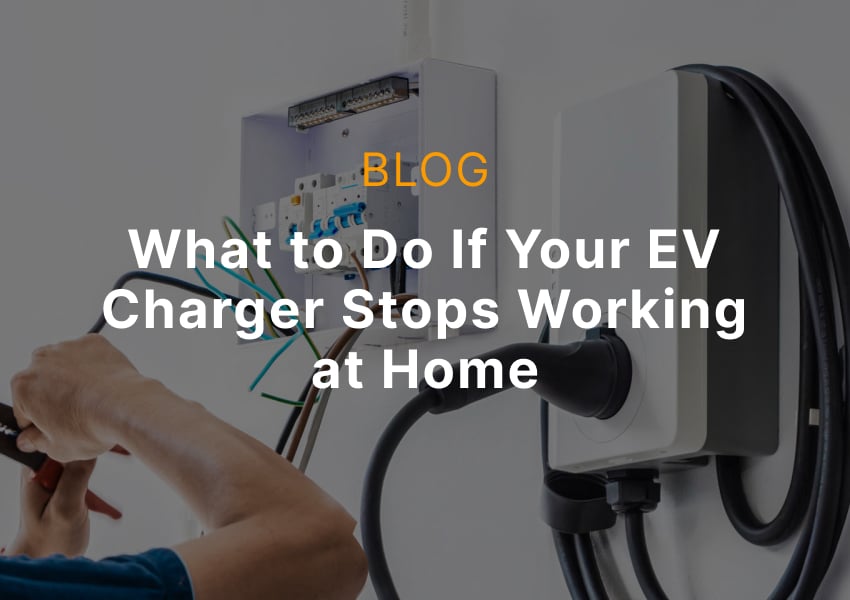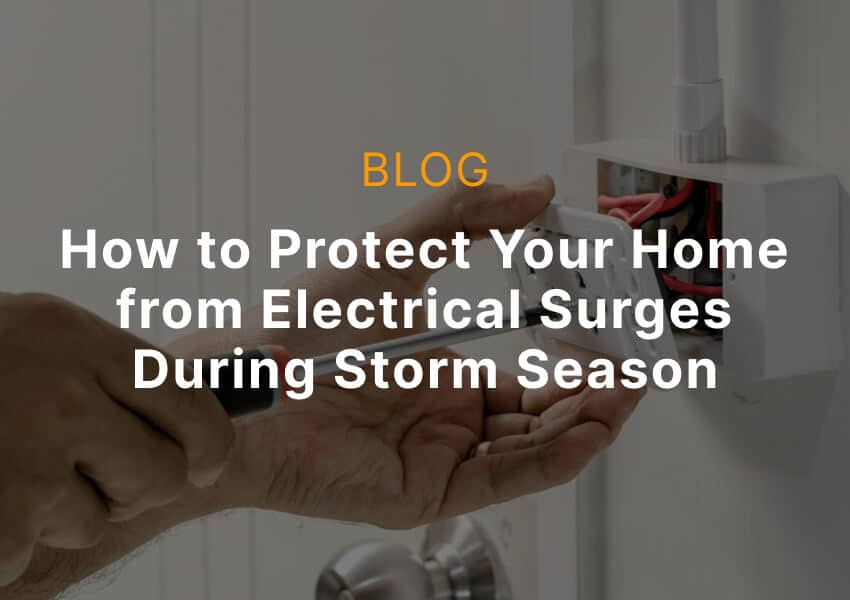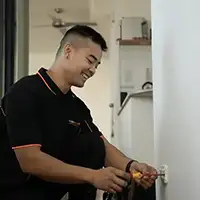It’s frustrating when your lights suddenly go out in the middle of the night. Power tripping can disrupt your sleep, stop essential appliances, and even pose a safety risk. Many homeowners in Sydney experience unexpected trips without knowing why. In most cases, the cause is electrical overload, faulty wiring, or a damaged appliance drawing more current than your system can handle.
Understanding the real reason behind power tripping helps you keep your home safe and your electrical system stable. It’s not just about resetting the breaker; it’s about finding out what’s wrong and fixing it properly. This guide explains the most common causes, what to look for, and when you should call a licensed electrician for help.
What Does Power Tripping Mean?
When your power cuts out suddenly, it usually means the system is protecting itself from a problem. Power tripping happens when too much current flows through your electrical circuit, forcing your safety devices to shut everything off. This automatic reaction prevents damage, fires, or electrical shocks.
Many homeowners ask, why is my power tripping even when only a few appliances are running? The answer is that modern switchboards and safety switches are designed to detect the slightest irregularities in current flow. If something goes wrong, like a short circuit, overloaded socket, or faulty appliance, the system will immediately trip.
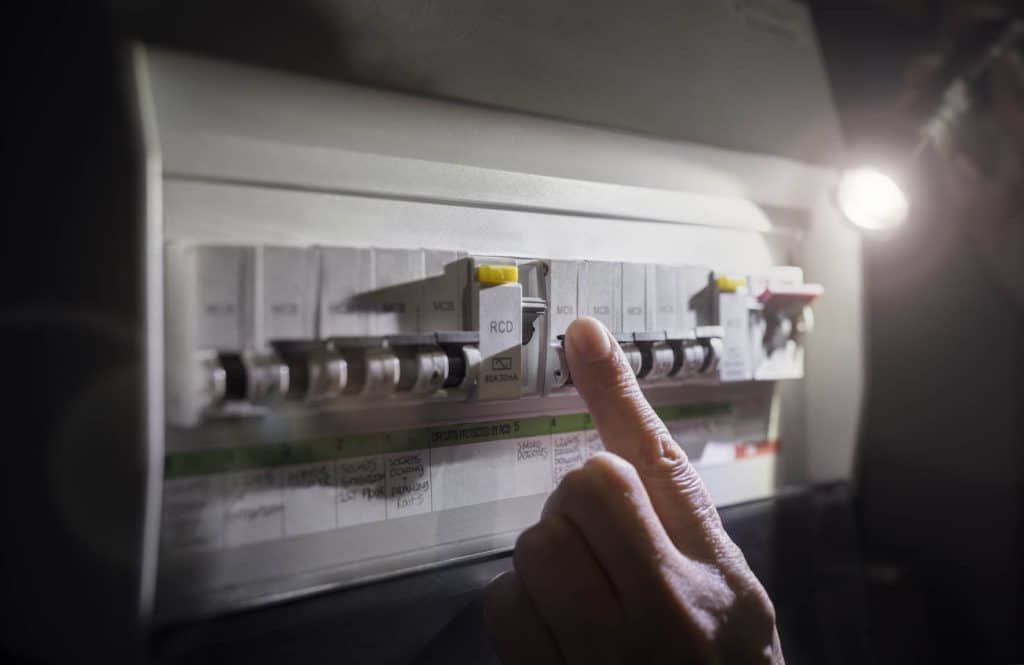
Common Causes of Power Tripping at Night
Power issues that occur at night are often more noticeable because that’s when most people are home using multiple appliances at once. The causes of power tripping can range from overloaded circuits to damaged wiring or faulty equipment. Understanding these common reasons helps you identify what’s happening and how to prevent future interruptions.
Overloaded Circuits at Home
An overloaded circuit is one of the most common causes of a nighttime power trip. When too many devices are plugged into a single line, like air conditioners, heaters, and kitchen appliances, the current exceeds what the circuit can handle. Your breaker reacts instantly by shutting down to prevent overheating or fire.
If your lights dim before the trip or certain outlets feel warm, it’s a sign that your circuit is under strain. Try unplugging unnecessary devices or spreading usage across multiple outlets. If the problem continues, a licensed Australian electrician can inspect your load capacity and recommend an upgrade to handle your household’s energy needs safely.
Short Circuit or Electrical Fault
Another frequent culprit is a short circuit. When wires touch or insulation breaks down, current travels through unintended paths, creating excess heat and causing the breaker to trip. Common short circuit causes include damaged cords, loose wiring, or moisture entering outlets.
Night-time humidity and condensation can make these problems worse, particularly in bathrooms or outdoor areas. If you hear a pop, smell burning, or see sparks before the power goes out, switch everything off and call an electrician immediately. Short circuits are serious and should never be ignored, as they can lead to fires or significant property damage.
Faulty or Damaged Appliances
A faulty appliance causing a trip is another likely scenario when the power keeps tripping in the house at night. Older or damaged devices can draw too much current or leak electricity through their internal wiring, triggering your breaker or safety switch.
To identify the source, unplug all appliances and reset your system. Then, plug each item back in one at a time until the trip happens again. The last device you connected is usually the culprit. Avoid using it until it’s checked or replaced. If several devices are affected, the issue could be a deeper wiring problem needing professional inspection or electrical repairs.
Outdated Switchboard or Components
If you’ve ruled out appliances and wiring, the issue might stem from your switchboard. Older systems often lack modern safety features and can’t manage today’s power demands. In many cases, a switchboard upgrade for tripping issues is the safest long-term solution.
Modern switchboards have built-in circuit breakers and residual current devices (RCDs) that respond faster to faults. They’re also more reliable during peak usage times like night hours when heating, cooling, and entertainment systems run simultaneously. If your switchboard is outdated or frequently overheats, upgrading it can prevent recurring trips and improve your home’s overall electrical safety.
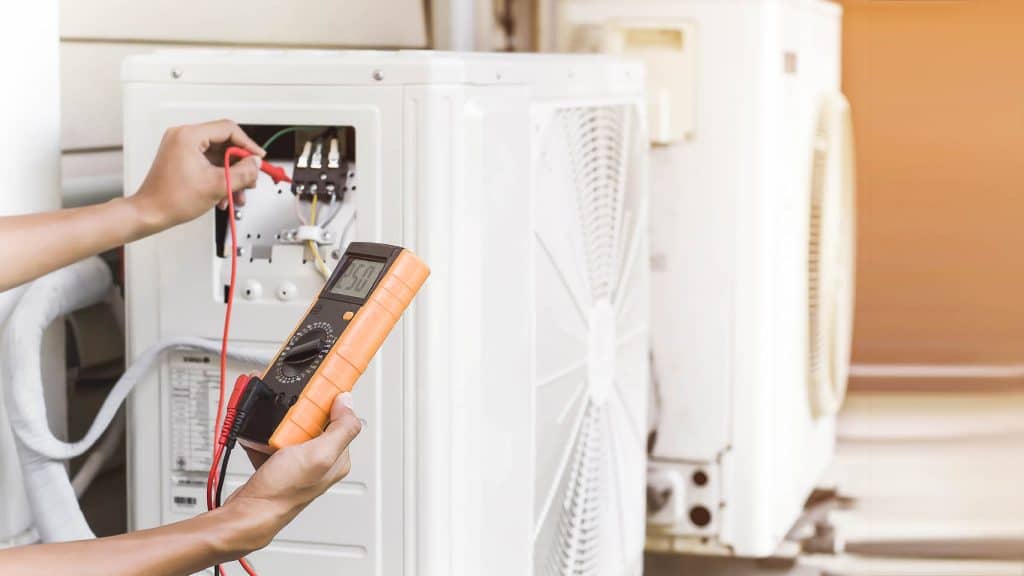
How to Reset and Diagnose a Power Trip
When your power cuts out, your first instinct might be to flick the switch back on, but doing this blindly can be risky. Understanding how to reset circuit breaker devices properly and isolate the cause helps protect your home from further damage. Follow these safe steps before calling an electrician.
Reset the Circuit Breaker Safely
Go to your switchboard and look for the tripped breaker, which usually sits midway between the “on” and “off” positions. To reset, switch it fully off first, then back on again. If the breaker trips again immediately, avoid forcing it.
The circuit breaker keeps tripping because something downstream is faulty or overloaded. Forcing it repeatedly can damage your electrical system or conceal a serious hazard. If your lights or sockets don’t power back up, stop and call a professional electrician to inspect the issue.
Test Each Appliance Step by Step
If resetting doesn’t work, unplug all appliances on the affected circuit. Turn the breaker back on, then reconnect each device one at a time. When the trip recurs, you’ve identified the problem area.
Often, the safety switch keeps tripping when one particular appliance has deteriorated wiring or a moisture fault. Items like kettles, fridges, and air conditioners are common offenders. Avoid using any device that repeatedly causes a trip and have it tested by a licensed technician.
You can also check for visible damage to cords, plugs, or sockets. Never handle frayed cables or open outlets, especially if you notice a burning smell or discolouration. These are clear indicators of electrical faults that require urgent attention.
When to Call a Licensed Electrician
If the power won’t stay on or trips keep happening across multiple circuits, it’s time to stop troubleshooting and get professional help. Knowing when to call an electrician can prevent fires, shocks, and expensive equipment damage.
A licensed electrician will use specialised tools to test insulation, identify hidden faults, and check whether your system complies with Australian Standards. They can also determine if your home’s wiring or switchboard needs an upgrade to handle your energy usage safely. Quick intervention saves time and money in the long run, while ensuring your household remains protected from recurring electrical issues.
How to Prevent Future Power Trips
Once you’ve restored power, prevention becomes the next priority. Repeated power tripping isn’t just inconvenient; it’s a sign your system is under stress. Small changes in appliance use and maintenance can make a big difference in keeping your circuits stable and safe.
Balance Appliance Usage
Avoid running multiple high-energy appliances on the same line. Spreading out devices like heaters, dryers, and microwaves prevents overloading your circuits. If your home’s energy demands have grown, ask an electrician to assess whether your wiring or switchboard can handle the load.
Schedule Regular Electrical Inspections
Annual or biannual inspections by a licensed electrician ensure your system stays compliant with Australian Standards. These checks detect early signs of wear, loose wiring, or insulation faults before they cause trips or outages. Preventive maintenance is far safer and cheaper than waiting for an emergency.
Replace Ageing Equipment
Old or worn-out appliances can cause power fluctuations. Replacing outdated or damaged devices reduces the risk of faults and helps your electrical system run efficiently. Always buy quality, Australian-approved products with proper safety certifications.
Consider a Switchboard Upgrade
If your home experiences frequent trips, flickering lights, or hot outlets, an upgrade might be due. Modern switchboards feature circuit breakers and residual current devices (RCDs) that protect your family from shocks and electrical fires. A professional electrician can determine whether a switchboard upgrade and repair will solve recurring tripping issues for good.

Getting Expert Help When Problems Persist
If your home continues to experience power tripping, the safest solution is to have a qualified electrician inspect your system. Persistent tripping usually points to a deeper fault, such as damaged wiring, ageing switchboard parts, or an appliance that’s quietly failing. Ignoring these warning signs can lead to more serious issues like overheating, electrical fires, or long-term appliance damage.
An experienced electrician can pinpoint the exact cause and carry out the necessary repairs or upgrades to restore stability. They’ll also check your switchboard, safety switches, and wiring to ensure your home complies with current Australian safety standards.
At Powerhub Electrical, our licensed electricians provide reliable diagnostics, switchboard upgrades, and emergency repairs throughout Epping, Parramatta, and surrounding suburbs. Whether your circuit breaker keeps tripping at night or you’re concerned about an overloaded circuit, our team can help you get your power back safely and efficiently.
For fast, friendly assistance, call 0400 332 331. We’re available 24/7 and offer same-day service, $50 off your first booking, and 15% pensioner discounts.

